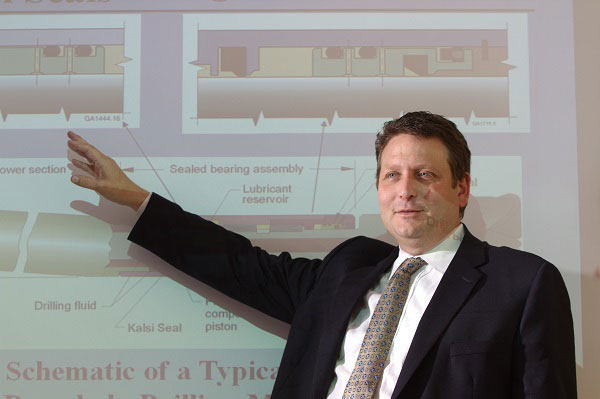Kalsi Seal-Related Shop Training for Oilfield Downhole Tools

The shop technicians who assemble downhole tools are critical to operational success. Recognizing this, we offer a Shop Training course that provides recommendations on issues that impact the reliability of the rotary seals used in the tools — and by extension the tool itself. This training is offered free of charge and is typically limited to about 40 minutes to minimize its impact on daily shop production. Shop training is usually provided at the customer site but can also be provided at our facility or via web conference. Contact us for more information, to schedule training, and to learn how we can help you increase tool reliability.
The class begins with a brief introduction to Kalsi Engineering and the principle of operation of Kalsi-brand rotary shaft seals. This conveys the concept of hydrodynamic pumping related lubricant leakage, which helps to explain the function of the lubricant reservoir. With the knowledge that lubricant is pumped through the rotary sealing interface, the relevance of clean lubricant and hardware components becomes apparent. We also describe the desirability of degreasing the seal groove in the seal housing after cleaning the seal housing.
We describe seal extraction practices that minimize the risk of damage to seal housings. We also describe the impact extraction-related housing damage can have on seal performance and describe a simple technique for repairing a common form of housing damage. Other causes and types of housing damage are also briefly discussed, so the technicians know to look for them.
To help to prevent seal installation mix-ups, we briefly cover the reasons more than one type of rotary seals may be used in a downhole tool. We then cover recommended seal storage practices and emphasize the benefits of storing seals in their original packaging (e. g. traceability, protection).
Recommended practices for installing the seal into the housing groove are discussed. The causes and nature of several types of shaft damage are also discussed, along with the impact such damage has on seal performance. The preferred characteristics of the seal installation path are described, along with several techniques for overcoming installation difficulties when the preferred characteristics are absent.
The importance of proper filling of the lubricant reservoir is emphasized, along with the implications of inadvertent underfilling, overfilling, and partial filling. The implications of the lubricant fill between a Kalsi Seal and a barrier seal are also typically discussed. This leads naturally into a discussion of the importance of ensuring that pressure venting passages are open and functional with pressure compensation pistons that use multiple sliding seals to prevent piston slippage.
At the conclusion of the class, shop technicians will have a better understanding of the best practices for extracting and installing Kalsi-brand rotary seals, and several types of damage to look for when handling used mandrels and seal housings. They will also understand the importance of clean lubricant, proper filling of the lubricant reservoir, and keeping pressure venting passages open in pistons. This training benefits you and your staff by helping to assure the operational success of your downhole tools.
